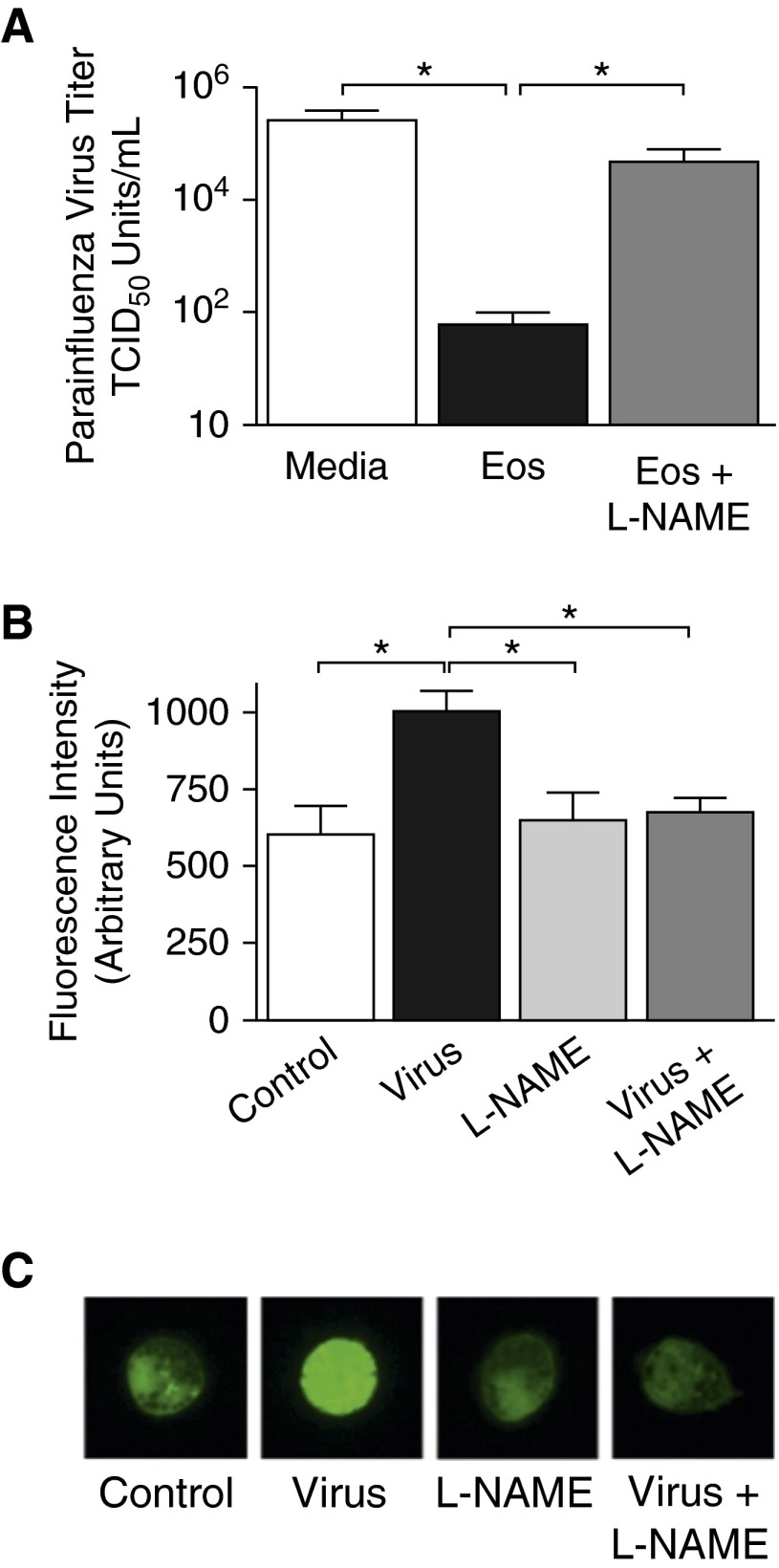Figure 6.
Eosinophil-derived nitric oxide reduces parainfluenza virus infectivity. Human eosinophils isolated from peripheral blood were cultured overnight with IFNγ. (A) Eosinophils were treated with the nitric oxide synthase inhibitor Nω-Nitro-L-arginine methyl ester hydrochloride (l-NAME; 100 μM) or vehicle for 30 minutes, then infected with parainfluenza virus. Virus infectivity was quantified 2 hours after infection by hemadsorption assay and expressed as viral TCID50 U/ml. Parainfluenza virus infectivity was significantly decreased in the presence of eosinophils. Eosinophils treated with l-NAME lost their antiviral activity (n = 4). (B) Nitric oxide production was assessed using an intracellular nitric oxide–detecting fluorescent probe. Eosinophils loaded with the probe were treated with l-NAME or vehicle and infected with parainfluenza for 1 hour. Eosinophil fluorescence increased significantly in response to parainfluenza infection, indicating an increase in nitric oxide production by eosinophils. l-NAME treatment prevented parainfluenza-induced nitric oxide production by eosinophils (n = 4). (C) Representative images of eosinophils loaded with nitric oxide–detecting fluorophore. Magnification, ×100. *P < 0.05. Data are presented as means (±SEM).

